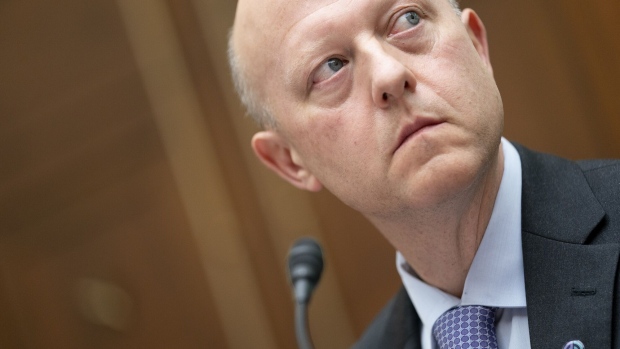Apr 26, 2023
Circle’s Allaire Signals Risks in US Are Impacting USDC Stablecoin
, Bloomberg News

(Bloomberg) -- A push by investors to “de-risk out of the US” amid banking sector and regulatory challenges contributed to the drop in the market value of stablecoin USD Coin, according to the chief executive of the token’s issuer.
“We are seeing a huge amount of concern globally about the US banking system,” Jeremy Allaire, CEO of Circle Internet Financial Ltd., said in an interview on Bloomberg Television on Wednesday. “We are seeing concern about the regulatory environment in the US.”
USD Coin temporarily lost its $1 dollar market peg during the banking crisis this year but has since stabilized. However, the token’s overall market capitalization has continued to fall and now stands at about $30.7 billion from a peak of more than $56 billion in 2022, CoinGecko data shows.
Stablecoins are key parts of the crypto sector where investors often park funds to use in trading. They are meant to hold a steady value, typically $1, and are often backed by reserves like cash and bonds. Regulators have stepped up scrutiny of stablecoins over concerns about the risks they can pose.
The market capitalization of USD Coin — also known as USDC — has dropped about $13 billion since US banking woes flared up in March. The token temporarily de-pegged after it emerged that $3.3 billion of the reserves used to back the stablecoin were at the collapsed Silicon Valley Bank.
Officials later said depositors will get their money back, part of an effort to shore up confidence in the US financial system. Circle also vowed to cover any reserves shortfall. That helped USDC recover its $1 value in crypto markets.
US Clampdown
In the US, crypto firms are reeling from a sharp regulatory crackdown following the collapse of the FTX digital-asset exchange and a deep market rout last year. Blowups like FTX and the market crash saddled investors with huge losses, leading to an outcry about the dangers of digital assets.
The US Securities and Exchange Commission contends that most tokens are unregistered securities and that too many digital-asset businesses have failed to comply with the agency’s requirements.
Crypto companies are calling on US politicians to put in place legislation to clarify the status of cryptoassets. But prospects for near-term passage of stablecoin rules have dimmed, hampered by partisan divides.
‘Critical Moment’
“It’s a critical moment here in the US and, as I like to say, it’s really a moment for Congress to step up,” Allaire said.
He said questions are being raised about the competitiveness of the US dollar amid the evolution of blockchain technology and Internet-based currencies.
The European Union, Hong Kong, Singapore and the Middle East are making progress on crypto rules, while “the US is behind right now,” Allaire said.
USDC is backed by cash and short-dated U.S. Treasuries and remains the second-largest token in the $132 billion stablecoin sector. The biggest is Tether, which has cemented its No. 1 position with a near $82 billion market value despite facing scrutiny about the transparency of its reserves.
(Updates with more comments from Allaire from the ninth paragraph)
©2023 Bloomberg L.P.





